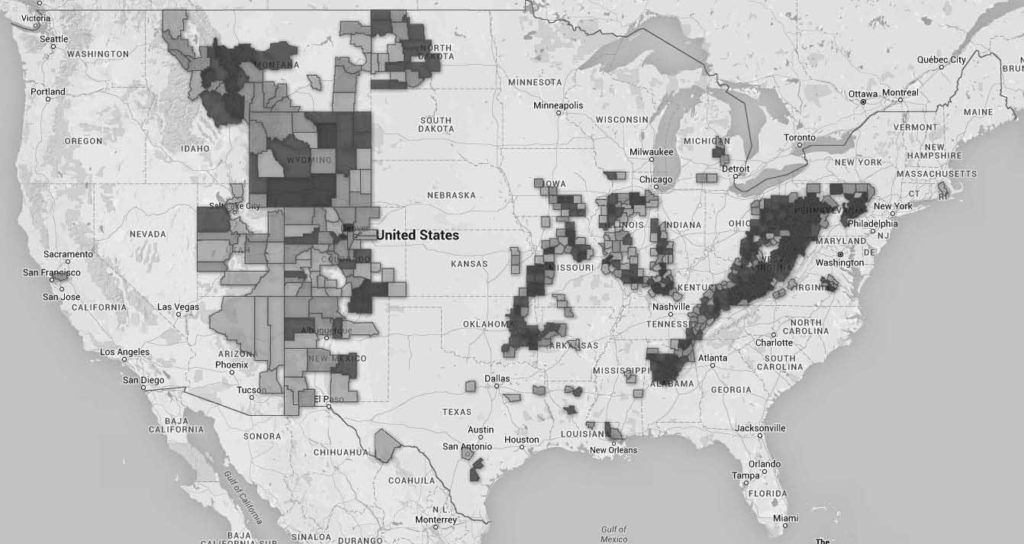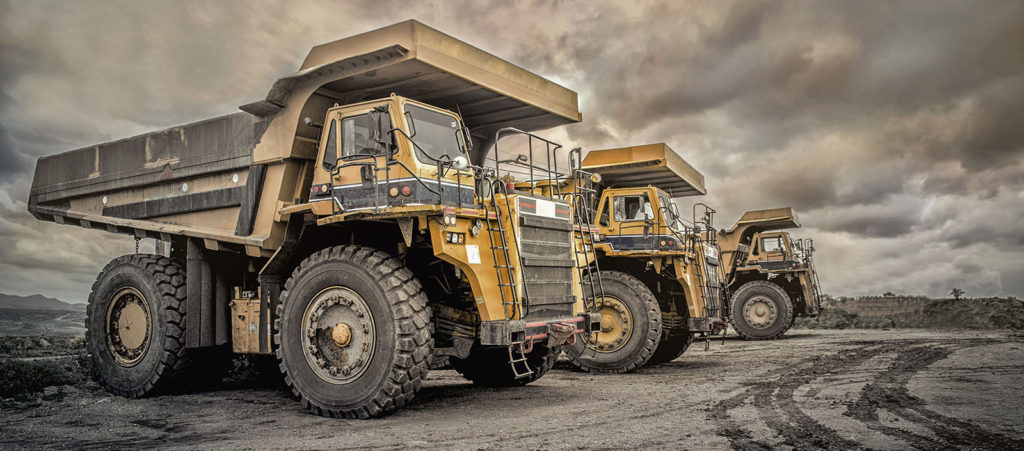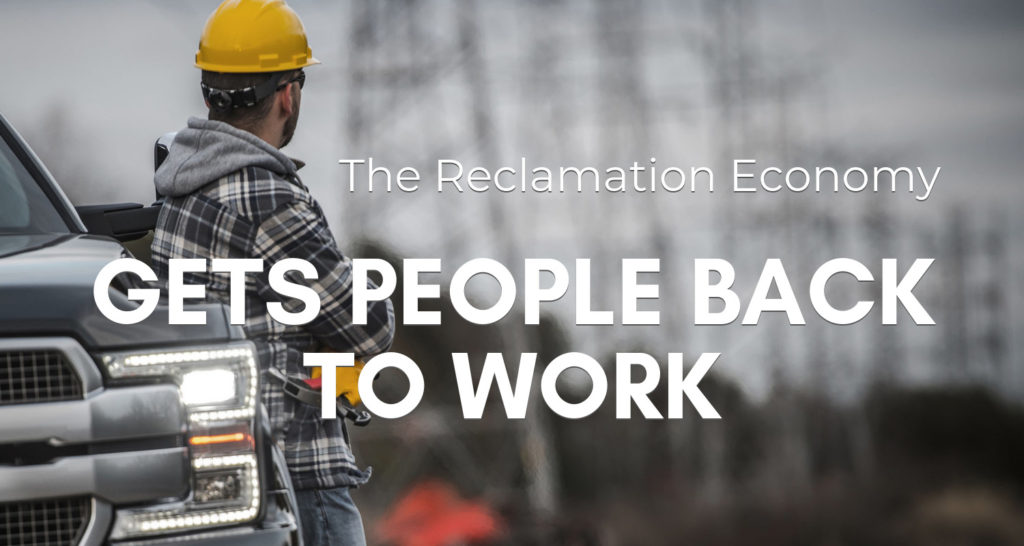Amid coal bankruptcies, it’s more important than ever to use all of the available tools to transition to more resilient, diverse economies.
On July 1st, 580 employees of the Blackjewel mines Belle Ayr and Eagle Butte were told to pack up their things and not come back to work. These mines have been distressed for some time, leading Blackjewel to file for bankruptcy, but the rapidity with which the mines closed their doors has been shocking. It’s unclear whether mine cleanup will begin promptly, allowing workers to go back to work – a key lifeline for communities trying to weather the downturn in coal markets – or whether reclamation of the mined land will be delayed by the bankruptcy process. Likely, the nearby communities that have been dependent on the mines are going to take a triple hit of unemployed workers, unpaid taxes, and unpaid suppliers and contractors, who alone are owed more than $150 million by Blackjewel.
Nearby communities that have been dependent on the mines are going to take a triple hit of unemployed workers, unpaid taxes, and unpaid suppliers and contractors.
The restoration economy in coal communities has the potential to be one of the most important components for a successful transition into a post-coal future. Oftentimes, the restoration economy is assumed to mean solely jobs associated with cleaning up recently shuttered coal operations, like reclaiming mined lands and toxic coal ash waste. The restoration economy, though, can encompass more than just addressing recent coal industry messes. Cleaning up nearby hard rock mines and pre-1977 coal mines not covered by the Surface Mining Control and Reclamation Act (SMCRA) would add even more economic benefit to transitioning coal communities. Like all economies, the restoration economy can’t work off of only one revenue source. Taking a wider view of possible solutions like passing the RECLAIM Act, reforming the Mining Act of 1872, and others, is key to helping communities reliant on the collapsing coal industry become resilient, sustainable economies.

In the West, many old coal mines and hard rock mines are located near current coal-dependent communities. For instance, looking at abandoned mine sites on BLM lands, nearly all the locations in Colorado are on the Western Slope. This is the same area that is being hard hit by the decline of the coal industry. Cleaning up these sites will require a sizable, well-trained reclamation workforce – which is exactly what Western Slope communities can provide. In Wyoming, the most costly abandoned sites to reclaim (i.e. the ones with the largest cleanup needs) are located in the Powder River Basin and in the southwestern corner of the state where large coal layoffs have already happened or are anticipated. With three bankruptcies in the first half of 2019, Wyoming coal communities are already at risk of losing huge percentages of their tax base. And in North Dakota, the situation is the same.
Jobs in reclamation and restoration are ideal for former miners and other coal workers who already have many of the required skills – or can easily train up – for these new positions.
These additional jobs mean a lot for rural coal communities which have far fewer industries to absorb the shock of a mine shut down and fewer revenue replacement options for local governments. Jobs in reclamation and restoration are ideal for former miners and other coal workers who already have many of the required skills – or can easily train up – for these new positions.
This more comprehensive view of the restoration economy can help an area prepare for the future. Addressing the damage from legacy mines along side more recent coal development will repair the resources, like clean water, needed for other industries, including agriculture or tourism. It will additionally make the area’s property more attractive for future businesses, like clean energy developers, recreation-based industries, and homebuyers.
Cleaning up these additional sites is expensive, however, and that’s why public policy and funding is critical. Two solutions are being addressed by Congress now and need our support. Reforming the 1872 Hard Rock Mining Law would provide much-needed accountability and reclamation obligations to the hard rock industry going forward and would spur cleanup of thousands of abandoned hard rock mines throughout the West. Passage of the RECLAIM Act would allow Abandoned Mine Land funds to be distributed more quickly for cleanup of pre-1977 coal mine lands, giving a boost to communities living in the shadow of these mines. Both of these laws are good for both the people living with the boom and bust of resource extraction, and the landscapes they call home. WORC’s efforts to pass these critical reforms will be felt all over the West, but will probably have the biggest impact for our rural coal communities.
Read more stories about coal here.
RECLAIM Act Offers Hope of Revitalization for Coal Communities
Non-Resident Coal Mine Owners are a Danger to Wyoming’s Communities
RECLAIM Act Cleans Up Coal Mines and Creates Jobs

Help create a healthy and sustainable West. Support WORC today.

